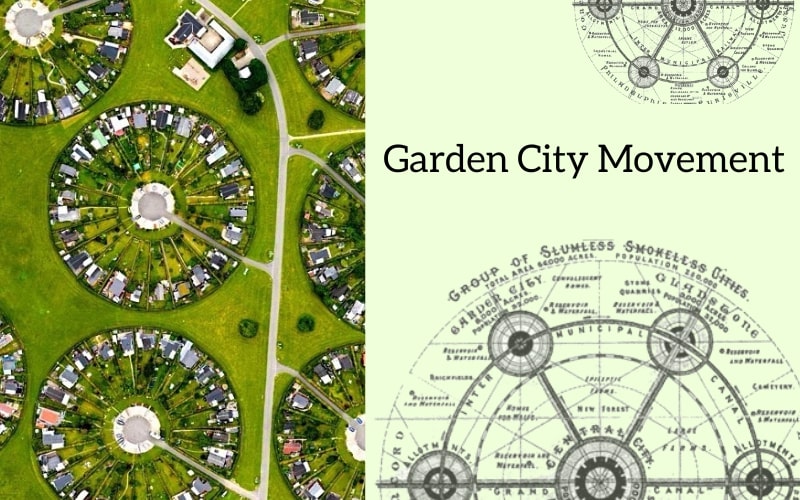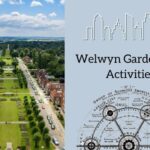The Industrial Revolution brought about not just innovative technology and factories spewing smoke, but also a significant surge in city dwellers. By the late 1800s, these bustling industrial hubs had morphed into gloomy slums marked by severe poverty. The need for change was urgent, and it arrived in the form of the Garden City Movement.
The Garden City Movement emerged as a visionary antidote to the disorder and destitution of urban life in Britain. The movement was the brainchild of the forward-thinking Ebenezer Howard, whose book “Tomorrow: A Peaceful Path to Real Reform” (1898) served as its guiding light. Howard believed that by improving housing conditions, fostering a better balance between urban and rural life, and strengthening community ties, a more harmonious society could be built.
But Howard wasn’t just a dreamer; he was a doer. Fueled by his relentless energy and hard work, he turned his vision into reality. As a result of his efforts, Britain saw the establishment of its two garden cities, Letchworth Garden City in 1903 and Welwyn Garden City in 1920. These cities stood as tangible proof of Howard’s belief that a better civilization was not just a dream, but a possibility within our reach.
Welwyn Garden City
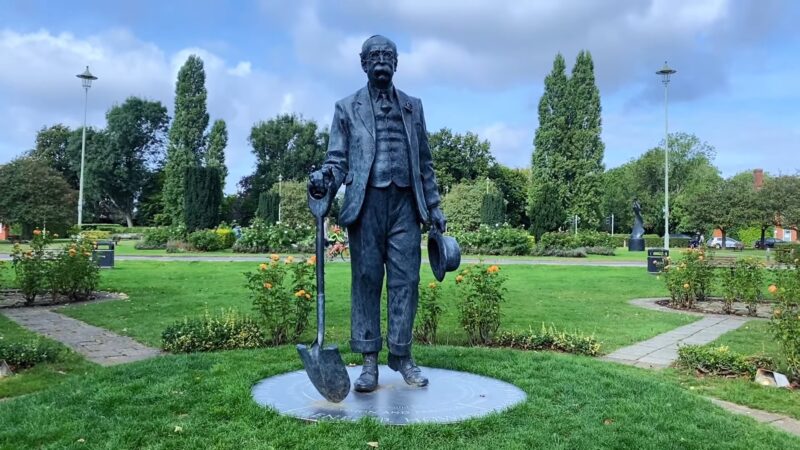
A Model Of Sustainable Development
In 1919, Howard purchased at auction the rolling green tract of Hertfordshire countryside upon which the town sits today and, the following year, a private company, Welwyn Garden City Limited, was formed to plan and build the new town.
In contrast to most towns, the garden city was built to a master plan by the Company that owned the freehold of the land. The Company quickly appointed a talented young architect, Louis de Soissons, as its master planner. De Soissons designed a place of beauty characterised by neo-Georgian buildings, elegant boulevards and generous open spaces. Existing trees and hedges were retained in his layout, and some of the original farm buildings still survive today – the Barn Theatre and the Backhouse room, for example.
The early settlers that came to live in the town were pioneers in a new project to create a better way of life. We would now call this approach ‘sustainable development’.
Welwyn Garden City Centenary
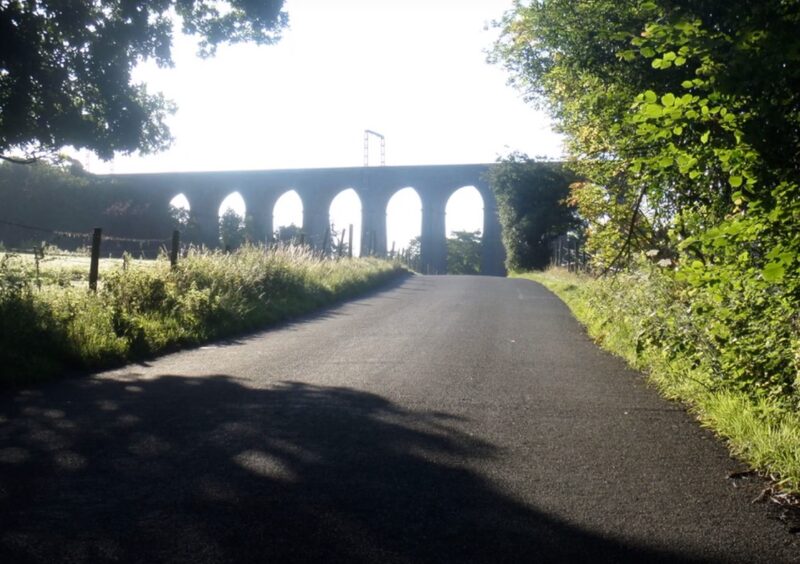
Let’s cast our minds back before the Atlee Government’s Town and Country Planning Act 1947. There were regulations about the use of land to protect public health and to promote agricultural advancement, but the need for ‘planning permission’ did not exist.
Having privately published his book To-morrow: A Peaceful Path to Real Reform in 1898, and seen it enthusiastically taken up and commercially re-printed in 1899, Ebenezer ‘Ben’ Howard had been delighted so quickly to have gained influential supporters in all walks of life, and to see the foundation of a powerful and influential fan club – the Garden City Association(GCA), which much later became the Town and Country Planning Association (TCPA).
Even though the propogandist GCA had set up a Garden City Pioneer Company in 1902 to focus on finding a site for the first demonstration project (they were homing in on the Chartley Castle Estatein Staffordshire after visits to sites in Warwickshire, Essex and Nottinghamshire1), they were alerted at short notice to an auction of farmland in Hertfordshire, and successfully bid for land for what was to become Letchworth Garden City. The more wealthy backers of the GCA assembled the money to honour the auction bid.
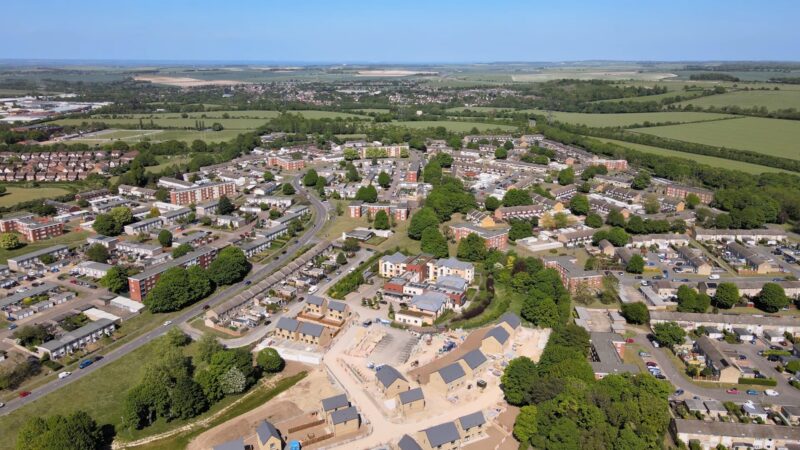
While there was no planning system to constrain the Company in acquiring land and declaring it to before a proposed Garden City, there was no planning system to protect potentially competing neighbouring land from market forces, so further land had to be bought by subterfuge before the project could be announced formally in October 1903 by First Garden City Limited.
Progress was painfully slow. Raising soft development loans was as difficult as it is now, and the Company was under financial stress. It was also strained from the tensions between the pioneer purists and the development pragmatists, from press scrutiny (often hostile or mocking), and from a degree of agitation that their master planner Raymond Unwin so quickly won a commission simultaneously to plan a much more grand ‘competitor’ scheme in the same vector of Outer London, at Hampstead Garden Suburb.2
Less than 20 years later, and after the First WorldWar, came Welwyn, the second Garden City. TheGCA (by then renamed as the Garden Cities and Town Planning Association) was rapidly gaining international recognition, and major conferences and publications focused on the progress at Letchworth.The argument became focused on the need for government to take up the Garden City invention(as Howard called it) and embark on a major national programme. ‘Land Fit for Heroes’ put breeze in the sails of the campaign, but the government prevaricated and – after huge lobbying – only went so far as to enable local authorities to acquire land for the purpose if they wished. Weak, buck passing. Rather like government policy on the subject today.
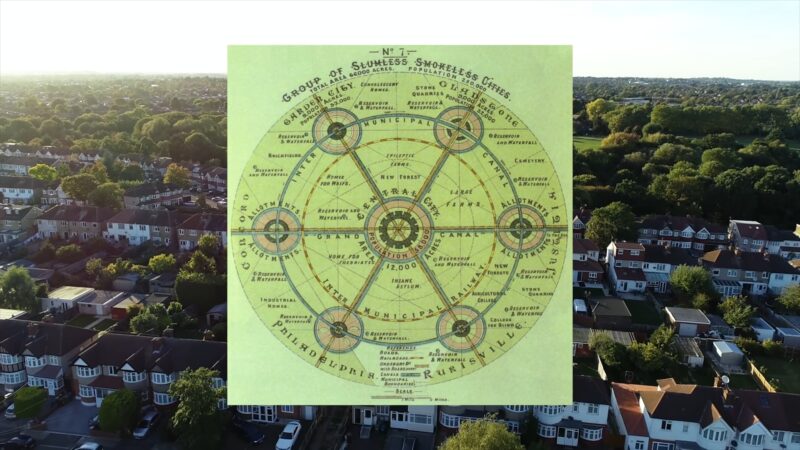
Howard (now 70) was impatient, saying ‘if you wait for the authorities to build new towns you will be older than Methusala before they start’, 3 and declared he would find a second site himself. He had already been in (fruitless) correspondence with Lord Salisbury to try to persuade the reluctant gent to sell land for a second Garden City, and so had been looking at the area around the Hatfield House Estate in broad terms.4
Then, Howard happened to see an advert for a major land auction to be held on 30 May 1919 in the Welwyn area. With only days to go, and in great excitement, he briefed the Chair of the Association,
‘Howard (now 70) was impatient, saying ‘if you wait for the authorities to build new towns you will be older than Methusala before they start’,3 and declared he would find a second site himself’
Richard Reiss, who with others helped quickly raise most of the money for the £5,000 deposit to buy the 1,500 acre shooting estate (the ‘mesmerised’ auctioneer staked Howard for the balance). The balance of £50,000 had to be raised fast from Association supporters, both individuals and institutions, and at twice the price per acre (making a total of £100,000 to be raised) Lord Salisbury was persuaded to sell a further 700 acres to reach the minimum viably sized site for the project. A public flotation was a flop (investors were not attracted to the limited dividend of 7%).5

The driver of the Centenary year has been the Welwyn Garden City Centenary Foundation,7 working under the Chairmanship of Peter Waine and energised by Board member Graeme Bell OBE (a TCPA Vice-President and 30 years a local resident). Peter and the Foundation’s Patron, the Marquess of Salisbury,8 both spoke enthusiastically of Welwyn Garden City and its message for modern times, from the balcony of the Howard Centre above the crowd. The schoolchildren, with their families and friendship groups, made a sparkling progression through the streets. It was a happy landmark moment.
The Centenary programme for 2020 is a full one. A carnival will take place on 11 July. Over 50 of the town’s sports and leisure clubs are planning events and competitions to run throughout the year, alongside the town’s music and performing arts groups with a festival. A sculpture of Sir Ebenezer Howard by sculptor Ben Twiston-Davies has been commissioned and is being cast in bronze right now.
A Centenary Walk will circle the periphery of Welwyn Garden City. Four new City of Trees trails will be launched. Other highlights in the calendar include performances from 24 April until 2 May of City of Tomorrow, written by the Garden City’s poet and playwright Glyn Maxwell. An International Symposium on Garden Cities and New Towns is to be held on 10-11 September.10 The hardy second Garden City in the world is worth a visit this special year.
Summary
In summary, the article provides a detailed account of the origins and development of Welwyn Garden City, a product of the Garden City Movement initiated by Ebenezer Howard. Born out of the chaos of the Industrial Revolution, the Garden City Movement aimed to create harmonious, sustainable communities that balanced urban and rural life.
Welwyn Garden City, established in 1919, stands as a testament to this vision. Despite initial financial struggles and the challenges of post-war economic depression, the city thrived, thanks to the persistent campaigning and tireless efforts of its founders.
As it celebrates its centenary in 2020, Welwyn Garden City continues to embody the principles of sustainable development and community living, offering a model for modern urban planning. The centenary celebrations include a host of events, from carnivals and sports competitions to music festivals and art installations, reflecting the vibrant community spirit that lies at the heart of this unique city.
